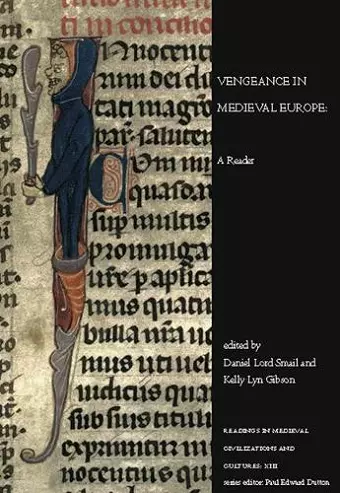Vengeance in Medieval Europe
A Reader
Daniel Lord Smail editor Kelly Lyn Gibson editor
Format:Paperback
Publisher:University of Toronto Press
Published:1st Jun '09
Currently unavailable, and unfortunately no date known when it will be back

This collection, Vengeance in Medieval Europe, examines the interplay of violence and peacemaking in medieval society through various historical texts.
In Vengeance in Medieval Europe, readers are invited to explore how medieval society navigated the complex terrain of private justice, grudges, and violent emotions. This groundbreaking collection brings together a wealth of unpublished and hard-to-find texts, shedding light on the multifaceted nature of violence and emotion during the Middle Ages. The sources included illustrate the pervasive language of vengeance, spanning the early, high, and later medieval periods, and offer a diverse range of perspectives, from legal documents and learned commentaries to narratives and practical records.
The compilation features a variety of voices, prominently highlighting the experiences of social elites while also incorporating accounts from lower-status individuals and women. Readers will encounter saints' lives that embody the concept of vengeance alongside court records that detail vengeful practices. A significant aspect of this collection is its focus on the mechanisms of peacemaking that were also vital in medieval European society, illustrating a balance between conflict and resolution.
The introduction provides an insightful overview of recent scholarly advancements in the study of vengeance, emphasizing its relevance to medieval political and social history. Vengeance in Medieval Europe serves as an invaluable resource for students, teachers, and researchers, offering extensive extracts from legal, religious, and narrative texts. It challenges readers to reconsider their understanding of vengeance and its implications in both historical and contemporary contexts.
The editors are to be applauded for their outstanding efforts to make so many relevant texts available. Overall, the entire period of the Middle Ages is well covered, and we can easily grasp the long tradition on vengeance going back to the Old Testament. This proves to be a very useful textbook that will allow new approaches in university seminars. - Mediaevistik
ISBN: 9781442601260
Dimensions: 229mm x 152mm x 33mm
Weight: 780g
277 pages